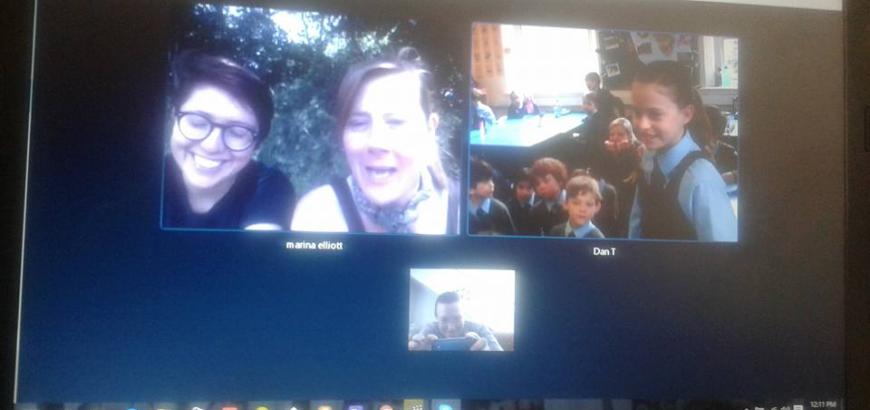By Elen Feuerriegel
For some, evolution can be a “hot button” issue — human evolution even more so. Public discourse in the U.S. around evolution is often polarizing and trying to create a meaningful dialogue between scientists and the public within that contentious space is frequently unproductive. Underpinning much of the debate surrounding scientific versus religious explanations of our origins is a lack of understanding about what evolution is and how it happens.
Like many scientists, I want to help build understanding and acceptance of evolution among diverse publics, including among people of faith. Science outreach programs are one of our best and most powerful tools to achieve this end. We in the Primate Evolutionary Biomechanics Laboratory (PEBL) have a dedicated outreach program including interactive workshops, laboratory tours, and seminars centered on engaging elementary through high school students in evolutionary science. We invite local and regional class groups, such as Holy Rosary School at Edmonds and the Confederated Tribes of the Colville Reservation, to tour our lab where students learn about human evolution and engage in activities and simple experiments. They use equipment like pressure pads that allow them to investigate small aspects of human evolution and to see evolutionary forces at work in their own world. When the students can’t come to the lab, we often go to them — as I did earlier this year when I had the opportunity to travel to rural Virginia to talk to middle and high school students about evolution.
Over the last two years, I’ve also had the privilege of collaborating with National Geographic in their Explorer Classroom program which connects classrooms around the world with National Geographic Explorers and scientists. Students can interact with the scientists (often as they are working in the field!), ask the scientists questions directly, and see science happening in real-time. The Explorer Classrooms have allowed me and the team I work with to connect with students all over the world as we are excavating our field site in South Africa. We’ve even made fossil discoveries while talking with students!
Outreach programs like this create intentional and meaningful engagement between scientists and the public. They also provide opportunities for children to see the diversity of people involved in scientific research. Sally Ride once said that you cannot be what you cannot see, and I’m fortunate to work and collaborate on outreach with a diverse research group. Not only can children see people that look like them doing science — making science a real and achievable goal if they choose to pursue it — but diverse scientists also enable familiarity with the breadth of perspectives, frameworks, and worldviews.
Understanding the fundamentals of evolutionary theory also has implications beyond understanding human origins. It can be critical for engaging with pressing political and environmental concerns like climate change, human diversity and health/well-being, conservation, and epidemiology. I don’t expect that all the students we talk to will become scientists, but I do hope to give them an appreciation of science and the place of humans in the tree of life. Having a little fun never hurts either.
Explorer Classroom links:
- https://www.youtube.com/watch?v=EsPd8TJD5P8
- https://www.youtube.com/watch?v=wCdqxKmw1Og
- https://www.youtube.com/watch?v=6XCj-efihNA

